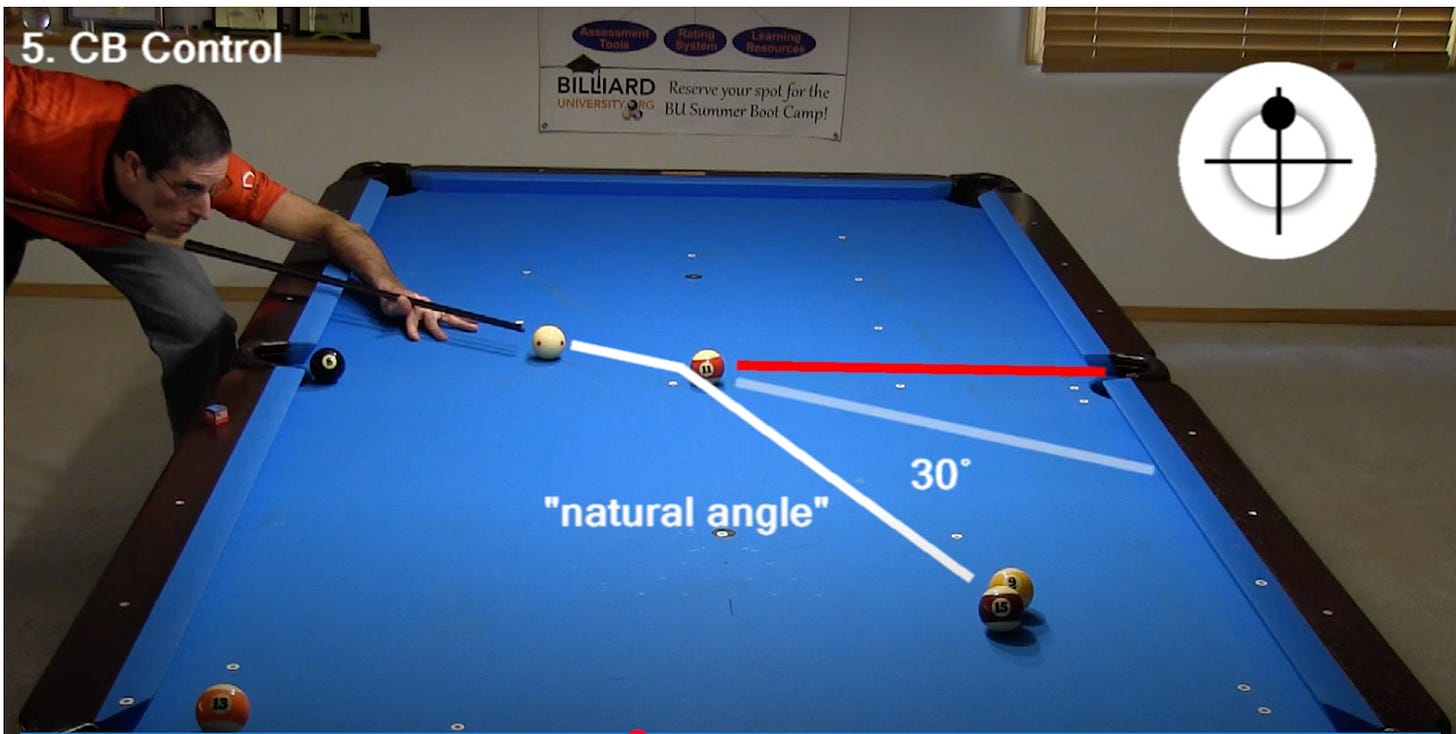What is it that an expert pool player sees when they look at the table? What are they aware of? This is the second dimension of the KASA framework.
Quick Recap of KASA
Knowledge = Facts and information.
Awareness = The ability to notice patterns, make predictions, and draw conclusions.
Skills = Physical and mental abilities.
Attitude = beliefs, feelings, and values related to learning and the subject matter.
In the previous post, we discussed how learning can be defined as a change in KASA and examined the difference between knowledge and skills in pool. If you missed it, I recommend checking it out, as it introduces some foundational pool concepts that will be helpful for this discussion.
While knowledge and skills are critical aspects of learning, people often overlook awareness and attitude. Today, we’ll focus on what it means to develop awareness—an essential but often underappreciated part of learning and expertise.
Understanding Awareness in Learning
Awareness is a cognitive ability—it allows people to notice details in their environment, draw conclusions, and make predictions. For example, an experienced pool player looking at the following situation can immediately see a problem if trying to pocket the black eight-ball in the side pocket:
Image from Darren Appleton’s YouTube video “Avoid the Most Common Scratch”
Experienced players predict that after the cue ball hits the object ball, it will scratch (i.e., go into the bottom left corner pocket—a foul).
Darren Appleton, a professional British player, demonstrates how to avoid this type of scratch in his video. Watching an expert like Appleton helps novice players increase their awareness by first seeing the mistake and then learning how to avoid it.
However, simply watching that video is not enough to develop awareness of the cue ball path, which is an essential aspect of the game. A beginner might not fully grasp the underlying principle behind why the scratch happens.
The 30-Degree Rule: A Shortcut to Awareness
Experienced players intuitively understand cue ball movement. A general rule of thumb is that, at a slow to medium speed, the cue ball follows a path of about 30 degrees after hitting the object ball.
Image from Dr. Dave’s video “How to Play Pool”
Dr. Dave, a well-known pool instructor, explains this as the “natural angle”—a predictable path the cue ball follows after impact.
🔹 See the 30-degree rule in action here (watch this short video clip).
With this awareness, players can better predict cue ball movement and plan their next shots, which is why skilled players seem to move effortlessly from shot to shot.
Developing Awareness Through Practice
While experimenting and noticing patterns can naturally build awareness, shortcut explanations—like Dr. Dave’s 30-degree rule—can accelerate learning.
However, awareness is not internalized just by hearing a rule. Players need to practice predicting cue ball paths and confirm their expectations through experience. In other words, they need to get a feel for it.
The Wagon Wheel Drill
One famous practice exercise for the cue ball path is the Wagon Wheel drill. In this exercise, players must think about where the cue ball will go after hitting the object ball.
Image from Dr. Dave’s “Wagon Wheel Drill” video
In this set-up, Dr. Dave shows how the 30-degree rule can be practiced by getting the cue ball to hit different targets after sinking an easy shot in the side pocket. In this video clip, you can see the practice in action. If you are interested in more rules about the path of the cue ball, feel free to watch the whole video.
Explicit vs. Implicit Awareness
Developing awareness can happen explicitly or implicitly:
Explicit awareness → Players learn a rule, such as the 30-degree rule, and consciously apply it.
Implicit awareness → Some expert players cannot articulate the rule but can predict cue ball movement perfectly due to experience.
This form of intuition-based learning is sometimes called tacit knowledge. We will explore this concept further in a future post when comparing novices and experts.
How Learning Pool Helped Me Understand Awareness
When I first learned about the KASA framework, awareness was the most mysterious concept to me. I often struggled to distinguish between awareness and knowledge.
Surprisingly, it was my journey learning pool that helped me clarify this distinction.
In a discussion on awareness, a friend of mine described it as “operationalized knowledge”—the ability to apply knowledge to make real-time decisions and understand the world.
This idea resonated with me. Awareness is not just knowing facts—it’s about using that knowledge to see patterns, anticipate outcomes, and make decisions. After this realization, I started thinking about how to improve my pool game in a different way. I also started to have a sense of wonder whenever I see experts who see the world and notice things that never even occurred to me.
What Do You Think?
How did this discussion of awareness resonate with you?
Do you have other ways of defining or explaining it?
Can you think of examples of awareness in pool, other subjects, or everyday life?
Drop a comment—I’d love to hear your thoughts! Also, if you want to automatically receive these blog posts, click subscribe!
Next time, we’ll dive into the second ‘A’ of KASA: Attitude. Stay tuned!





